Dronelost.com – Are you interested in drone racing but don’t know where to start? Do you want to experience the thrill of flying at high speeds and maneuvering through obstacles? Do you want to find the best beginner drones for racing?
Drone racing is a fast-growing hobby and sport that involves flying small, agile, and powerful drones with a first-person view (FPV) camera and goggles. Drone racers compete against each other on various courses and tracks, either indoors or outdoors, for fun or for prizes.
Drone racing is not only exciting and challenging, but also rewarding and educational. You can learn a lot about aerodynamics, electronics, and engineering by building and flying your own racing drone. You can also improve your hand-eye coordination, reflexes, and spatial awareness by piloting your drone through tight spaces and obstacles.
But before you can join the drone racing community, you need to have a suitable racing drone. Not all drones are made for racing. Some are too big, too slow, or too fragile. You need a drone that is small, fast, agile, and durable. You also need a drone that matches your skill level and budget.
Best Beginner Drones for Racing
That’s why we have compiled this list of best beginner drones for racing. These drones are easy to fly, affordable, and reliable. They are also compatible with most FPV systems and accessories. Whether you want to race indoors or outdoors, for fun or for competition, you can find a drone that suits your needs and preferences. Here are the best beginner drones for racing:
1. EMAX Tinyhawk 2 Freestyle
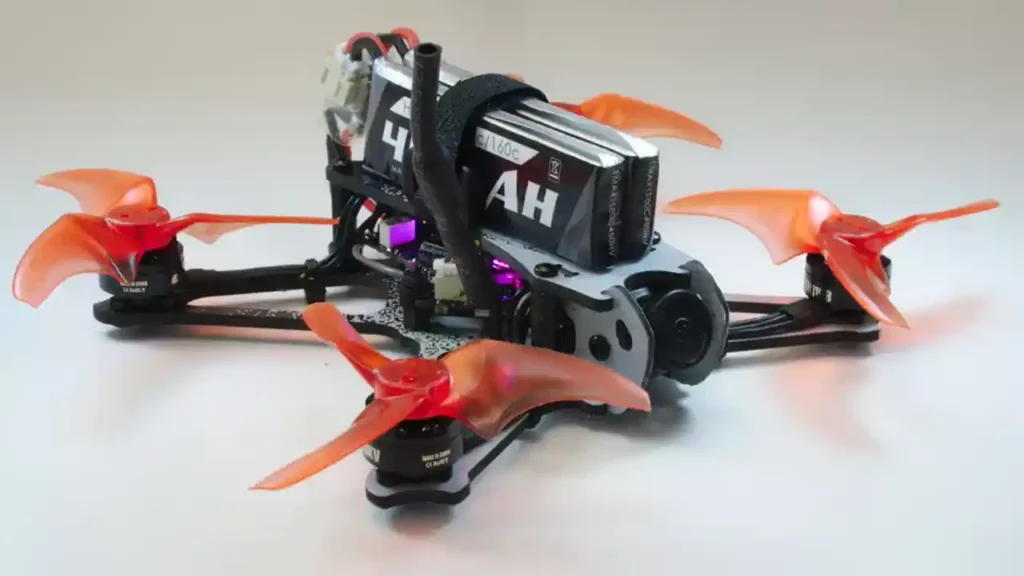
The EMAX Tinyhawk 2 Freestyle is one of the most popular and recommended beginner racing drones on the market. It is a 2.5-inch micro drone that weighs only 79 grams and can fly for up to 8 minutes on a single battery. It has a durable carbon fiber frame, powerful 7500kv motors, and a high-quality Runcam Nano 2 camera. It also comes with a complete kit that includes a pair of FPV goggles, a radio controller, and two 1S batteries.
The EMAX Tinyhawk 2 Freestyle is ideal for learning how to race and freestyle. It is fast and agile, but also stable and smooth. It can handle both indoor and outdoor environments, thanks to its adjustable camera angle and propeller guards. It also has three flight modes: angle, horizon, and acro, which allow you to adjust the level of difficulty and control.
The EMAX Tinyhawk 2 Freestyle is compatible with any FrSky D8 radio controller and most FPV goggles and monitors. It is also easy to set up and customize, thanks to its plug-and-play design and Betaflight software. You can change the settings, tune the performance, and update the firmware with just a few clicks.
If you are looking for a beginner racing drone that is fun, versatile, and reliable, you can’t go wrong with the EMAX Tinyhawk 2 Freestyle. It is a great drone to start your drone racing journey and to improve your skills and confidence.
2. DJI FPV
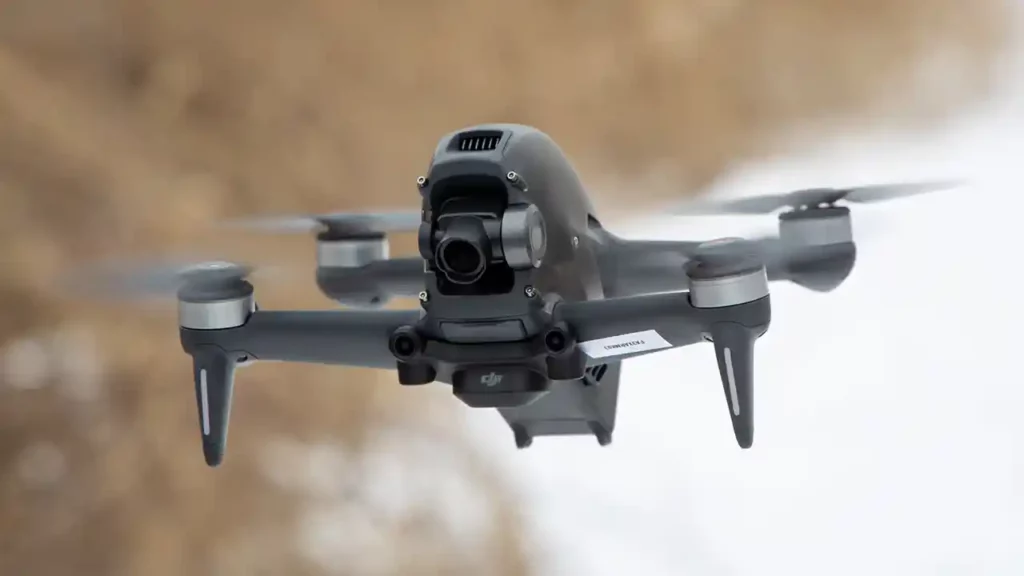
The DJI FPV is the latest and most advanced racing drone from the world’s leading drone manufacturer. It is a 5-inch drone that can reach speeds of up to 87 mph and fly for up to 20 minutes on a single battery. It has a sleek and aerodynamic design, a robust and modular frame, and a powerful and responsive flight system. It also comes with a state-of-the-art FPV system that includes a 4K camera, a pair of HD goggles, and a motion controller.
The DJI FPV is designed to deliver the ultimate FPV experience. It offers a stunning and immersive view of the sky, thanks to its low-latency and high-resolution video transmission. It also offers a smooth and intuitive control, thanks to its innovative and ergonomic motion controller. You can tilt and steer the drone by simply moving your hand, or switch to the traditional joystick controller for more precision and flexibility.
The DJI FPV also has three flight modes: normal, sport, and manual, which cater to different skill levels and preferences. Normal mode is for beginners, who want to fly safely and easily. Sport mode is for intermediate pilots, who want to fly faster and more aggressively. Manual mode is for advanced racers, who want to fly with full freedom and customization.
The DJI FPV is not only a racing drone, but also a cinematic drone. It has a 4K camera that can capture stunning videos and photos, with features like rocksteady stabilization, distortion correction, and slow motion. It also has a built-in video editor that lets you edit and share your footage on the fly.
If you are looking best beginner drones for racing that is cutting-edge, versatile, and immersive, you can’t go wrong with the DJI FPV. It is a drone that will take your FPV experience to the next level and beyond.
3. Hubsan H122D X4 Storm
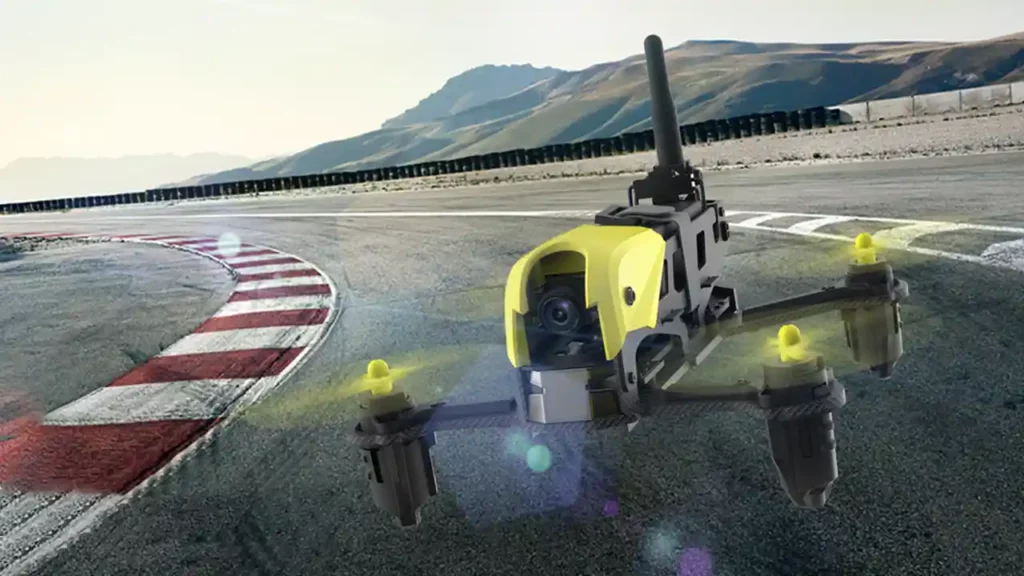
The Hubsan H122D X4 Storm is one of the most affordable and beginner-friendly racing drones on the market. It is a 2.4-inch mini drone that weighs only 116.5 grams and can fly for up to 6 minutes on a single battery. It has a durable and lightweight carbon fiber frame, a 720p camera, and a 5.8G FPV system. It also comes with a ready-to-fly kit that includes a pair of FPV goggles, a radio controller, and a 2S battery.
The Hubsan H122D X4 Storm is ideal for learning how to race and have fun. It is easy to fly, thanks to its 6-axis gyro and altitude hold functions. It also has two flight modes: normal and expert, which allow you to adjust the speed and sensitivity. It can perform 360-degree flips and rolls, and fly in any direction.
The Hubsan H122D X4 Storm is compatible with most FPV goggles and monitors, thanks to its 5.8G FPV system. It also has a low battery and signal warning, which helps you avoid losing or crashing the drone. You can also record and save your FPV footage on a micro SD card, which is not included in the kit.
If you are looking best beginner drones for racing that is cheap, simple, and fun, you can’t go wrong with the Hubsan H122D X4 Storm. It is a drone that will give you a taste of FPV racing and entertainment.
4. Walkera F210 3D Edition
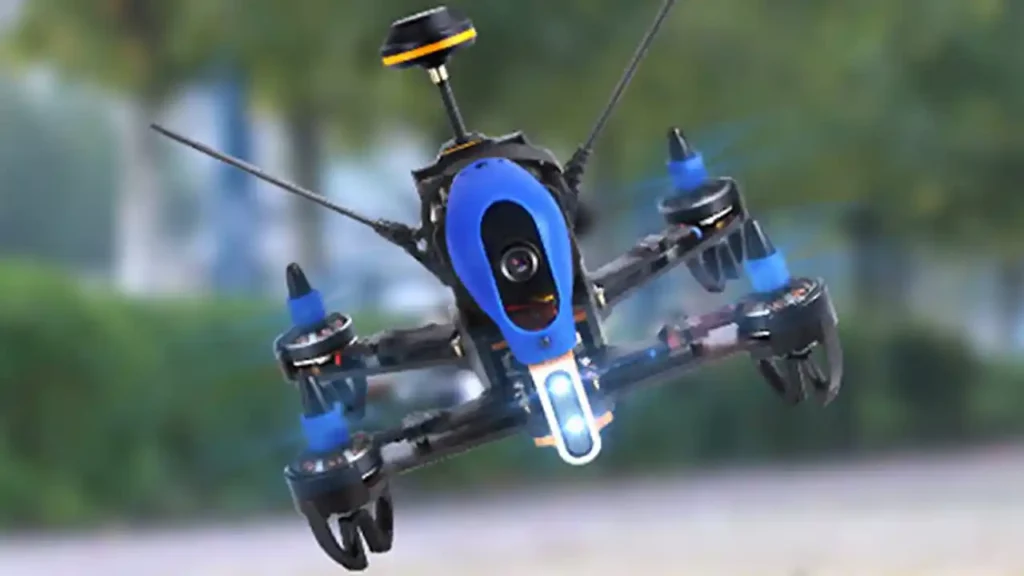
The Walkera F210 3D Edition is one of the fastest and most powerful racing drones on the market. It is a 5-inch drone that can reach speeds of up to 93 mph and fly for up to 9 minutes on a single battery. It has a sturdy and streamlined frame, a 700TVL camera, and a DEVO 7 radio controller. It also comes with a 4S battery, a charger, and a propeller set.
The Walkera F210 3D Edition is designed to deliver the ultimate racing performance. It has a responsive and agile flight system, thanks to its F3 flight controller, brushless motors, and ESCs. It also has a night vision and anti-shake camera, which allows you to fly in low-light and high-speed conditions. It can fly in both normal and inverted modes, which adds more challenge and excitement to your racing.
The Walkera F210 3D Edition is compatible with most FPV goggles and monitors, thanks to its 5.8G FPV system. It also has a low voltage alarm, which helps you avoid damaging the battery. You can also adjust the camera angle and the flight parameters, according to your preference and skill level.
If you are looking for best beginner drones for racing that is fast, furious, and thrilling, you can’t go wrong with the Walkera F210 3D Edition. It is a drone that will test your limits and push your boundaries.
5. ARRIS X220 V2
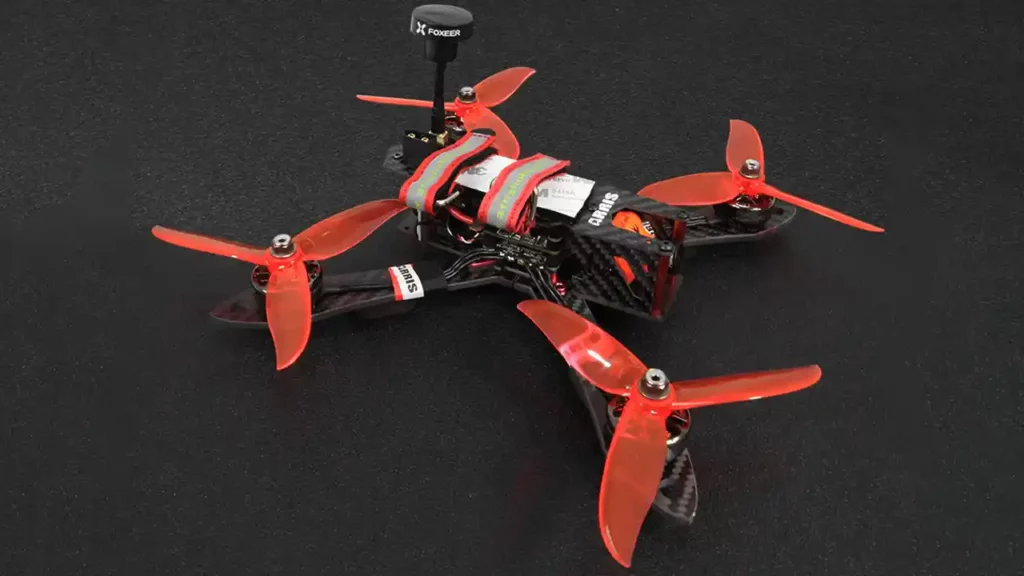
The ARRIS X220 V2 is one of the most versatile and customizable racing drones on the market. It is a 5-inch drone that can fly for up to 15 minutes on a single battery. It has a high-quality carbon fiber frame, a 1200TVL camera, and a Flycolor X-Tower F4 flight controller. It also comes with a 4S battery, a charger, and a propeller set.
The ARRIS X220 V2 is ideal for both beginners and experts, thanks to its easy and advanced flight modes. It has a self-leveling mode, which helps you fly smoothly and steadily. It also has a manual mode, which gives you full control and freedom. It can perform acrobatic maneuvers, such as flips, rolls, and loops.
The ARRIS X220 V2 is compatible with most FPV goggles and monitors, thanks to its 5.8G FPV system. It also has a low battery and signal warning, which helps you avoid losing or crashing the drone. You can also upgrade and modify the drone, thanks to its modular and open-source design. You can change the camera, the motors, the ESCs, and the flight controller, according to your preference and skill level.
If you are looking best beginner drones for racing that is flexible, adaptable, and powerful, you can’t go wrong with the ARRIS X220 V2. It is a drone that will grow with you and your racing ambitions.
6. Holy Stone HS150 Bolt Bee
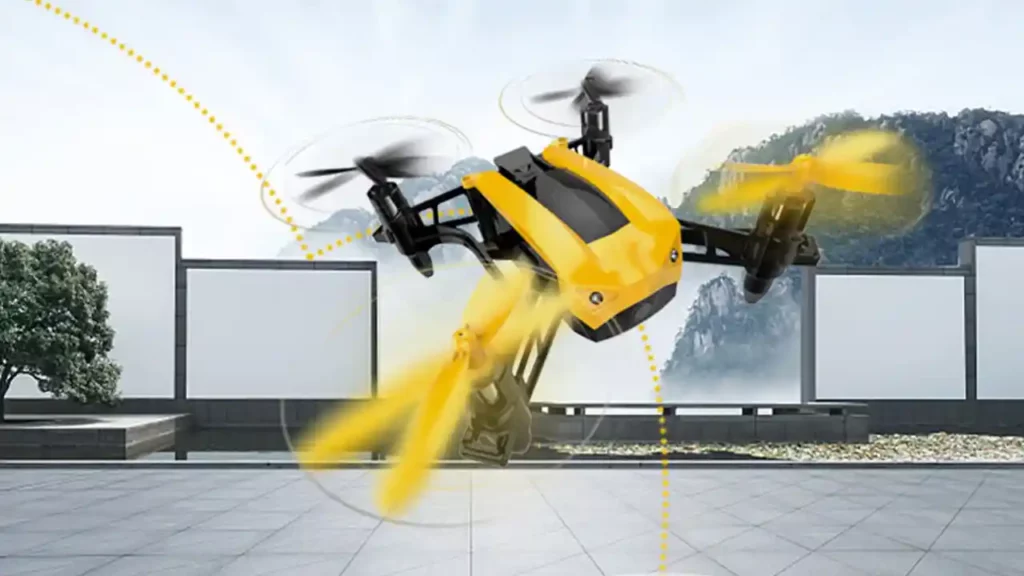
The Holy Stone HS150 Bolt Bee is one of the most fun and colorful racing drones on the market. It is a 2-inch mini drone that weighs only 68 grams and can fly for up to 7 minutes on a single battery. It has a bright and eye-catching design, a 720p camera, and a 2.4G radio controller. It also comes with two 3.7V batteries, a charger, and four extra propellers.
The Holy Stone HS150 Bolt Bee is ideal for learning how to race and have fun. It is easy to fly, thanks to its 6-axis gyro and headless mode functions. It also has five speed modes, which allow you to adjust the speed and agility. It can perform 3D flips and rolls, and fly in any direction.
The Holy Stone HS150 Bolt Bee is compatible with most FPV goggles and monitors, thanks to its 720p camera and 2.4G FPV system. It also has a one-key return function, which helps you bring the drone back to the controller. You can also record and save your FPV footage on a micro SD card, which is not included in the kit.
If you are looking for best beginner drones for racing that is cheap, cheerful, and playful, you can’t go wrong with the Holy Stone HS150 Bolt Bee. It is a drone that will make you smile and enjoy the FPV racing hobby.
7. Eachine Wizard X220S
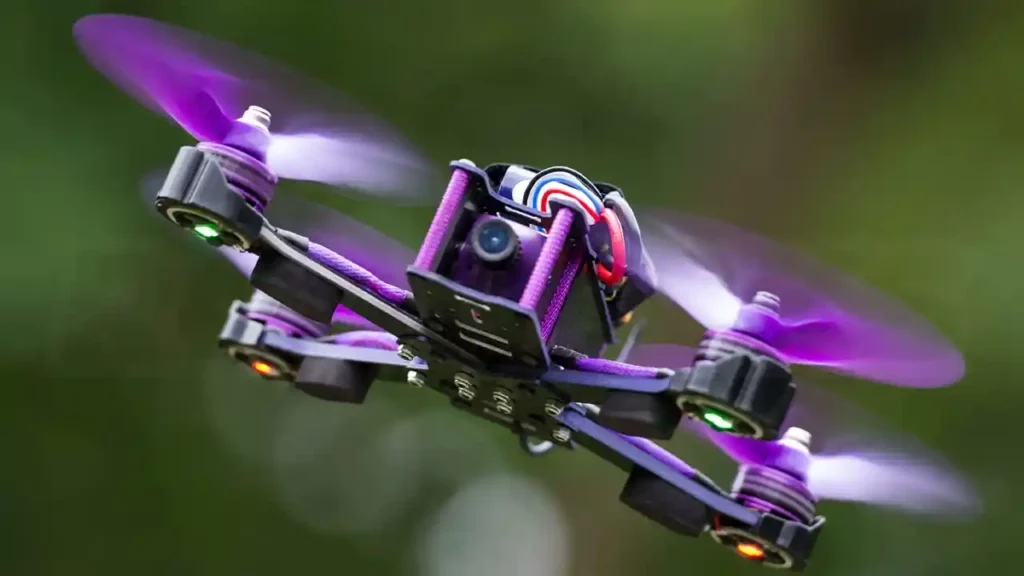
The Eachine Wizard X220S is one of the most popular and reliable racing drones on the market. It is a 5-inch drone that can fly for up to 12 minutes on a single battery. It has a sturdy and elegant frame, a 800TVL camera, and a Omnibus F4 V3 flight controller. It also comes with a 4S battery, a charger, and a propeller set.
The Eachine Wizard X220S is designed to deliver the best racing performance. It has a powerful and smooth flight system, thanks to its 2300KV motors, 30A ESCs, and BLHeli_S firmware. It also has a clear and stable camera, which allows you to fly in various light conditions. It can fly in both normal and 3D modes, which adds more challenge and excitement to your racing.
The Eachine Wizard X220S is compatible with most FPV goggles and monitors, thanks to its 5.8G FPV system. It also has a buzzer and LED lights, which help you locate and identify the drone. You can also customize and optimize the drone, thanks to its Betaflight software. You can change the settings, tune the performance, and update the firmware with just a few clicks.
If you are looking for a racing drone that is durable, stable, and powerful, you can’t go wrong with the Eachine Wizard X220S. It is a drone that will impress you and your competitors with its racing capabilities.
8. BetaFPV Cetus X
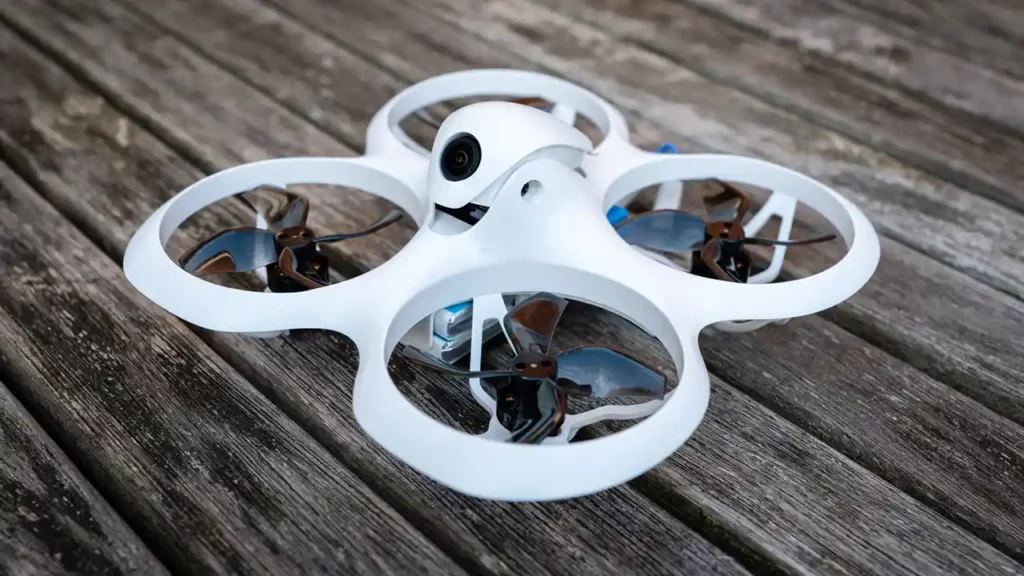
The BetaFPV Cetus X is a 2S power whoop drone that is ideal for beginners who want to get advanced flight skills. It is a 95mm drone that can fly for up to 5 minutes on a single battery. It has a durable and lightweight frame, a C04 FPV camera, and an M04 400mW VTX. It also comes with a BT2.0 450mAh 1S 30C battery, a charger, and a propeller set.
The BetaFPV Cetus X is designed to offer a smooth and stable flight experience. It has a reliable and flexible flight system, thanks to its F4 2S 15A V1.0 FC or Cetus BL V3 FC, 1103 11000KV motors, and Gemfan 2020 4-blades props. It also has a night vision and adjustable angle camera, which allows you to fly in different light and view conditions. It can fly in both normal and inverted modes, which adds more fun and challenge to your flight.
The BetaFPV Cetus X is compatible with most FPV goggles and monitors, thanks to its 5.8G FPV system. It also has a low voltage alarm, which helps you avoid damaging the battery. You can also adjust the camera angle and the flight parameters, according to your preference and skill level.
If you are looking for a whoop drone that is easy, fast, and versatile, you can’t go wrong with the BetaFPV Cetus X. It is a drone that will help you improve your skills and enjoy your flight.
9. Redcat Racing Carbon 210
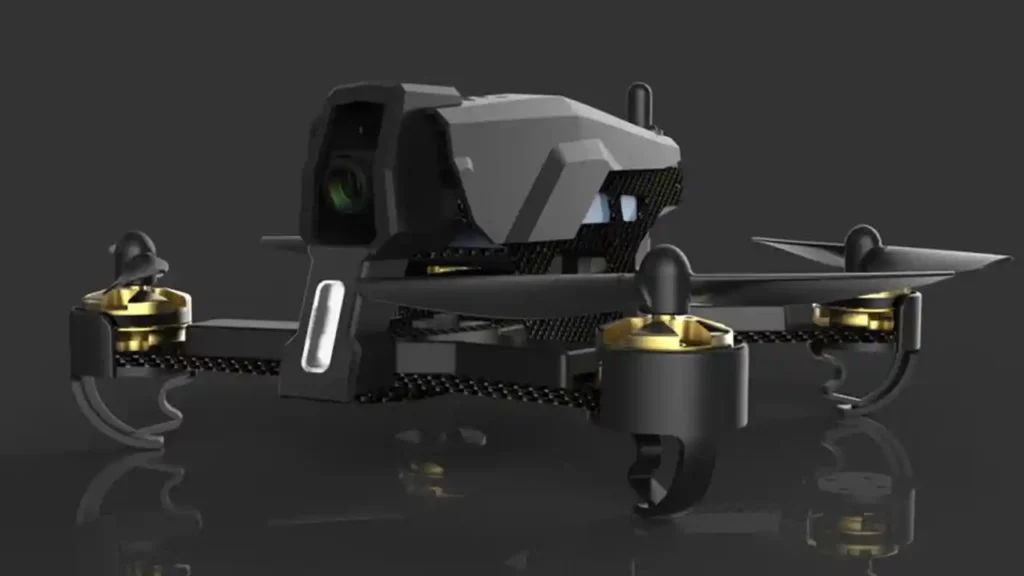
The Redcat Racing Carbon 210 is one of the most durable and rugged racing drones on the market also included best beginner drones for racing. It is a 5-inch drone that can fly for up to 10 minutes on a single battery. It has a tough and lightweight carbon fiber frame, a 700TVL camera, and a F3 flight controller. It also comes with a 3S battery, a charger, and a propeller set.
The Redcat Racing Carbon 210 is designed to withstand the harsh and demanding racing conditions. It has a robust and responsive flight system, thanks to its 2204 2300KV motors, 20A ESCs, and Cleanflight software. It also has a shockproof and waterproof camera, which allows you to fly in any weather and terrain. It can fly in both normal and acro modes, which cater to different skill levels and preferences.
The Redcat Racing Carbon 210 is compatible with most FPV goggles and monitors, thanks to its 5.8G FPV system. It also has a low voltage alarm, which helps you avoid damaging the battery. You can also adjust the camera angle and the flight parameters, according to your preference and skill level.
If you are looking for a racing drone that is tough, reliable, and resilient, you can’t go wrong with the Redcat Racing Carbon 210. It is a drone that will endure and survive the most challenging and extreme racing scenarios.
10. Holybro Kopis 2
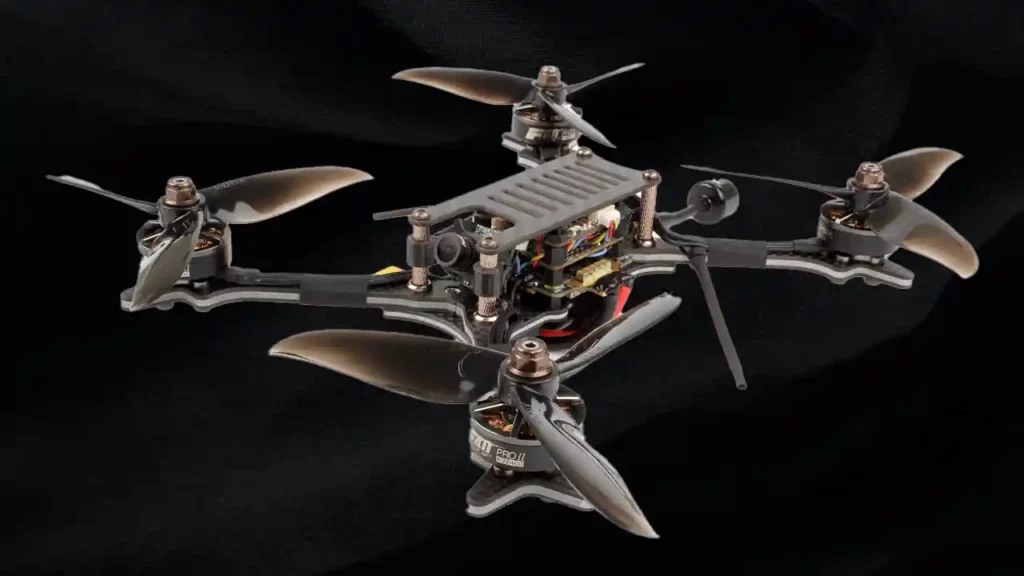
The Holybro Kopis 2 is one of the most professional and high-end racing drones on the market. It is a 5-inch drone that can fly for up to 18 minutes on a single battery. It has a premium and elegant frame, a 1200TVL camera, and a Kakute F7 flight controller. It also comes with a 4S battery, a charger, and a propeller set.
The Holybro Kopis 2 is designed to deliver the best racing performance. It has a powerful and smooth flight system, thanks to its 2306 2450KV motors, 35A ESCs, and BLHeli_32 firmware. It also has a clear and stable camera, which allows you to fly in various light conditions. It can fly in both normal and 3D modes, which adds more challenge and excitement to your racing.
The Holybro Kopis 2 is compatible with most FPV goggles and monitors, thanks to its 5.8G FPV system. It also has a buzzer and LED lights, which help you locate and identify the drone. You can also customize and optimize the drone, thanks to its Betaflight software. You can change the settings, tune the performance, and update the firmware with just a few clicks.
If you are looking for a racing drone that is professional, sophisticated, and powerful, you can’t go wrong with the Holybro Kopis 2. It is a drone that will amaze you and your competitors with its racing capabilities.
11. Eachine Novice-IV
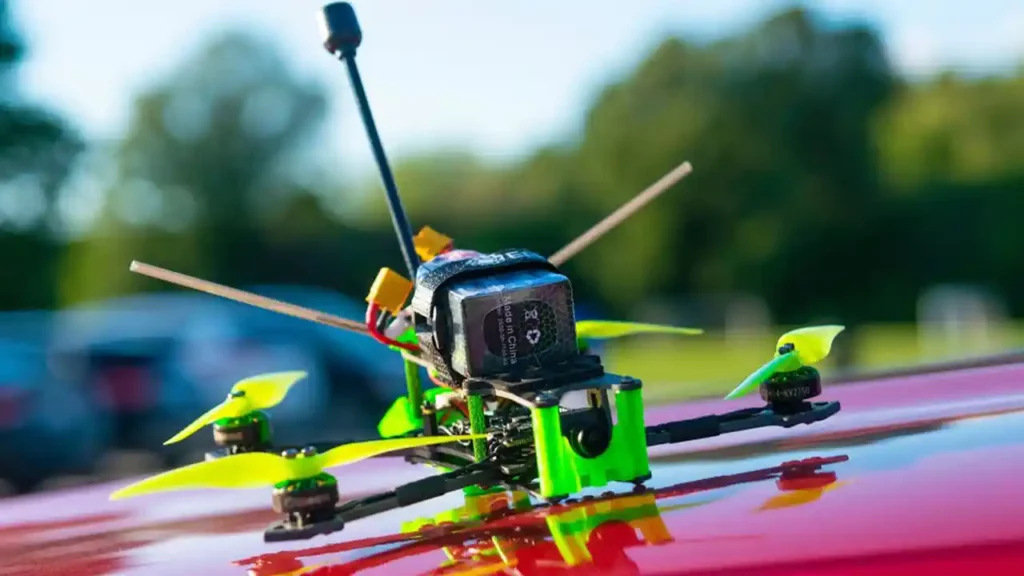
The Eachine Novice-IV is a 4-inch long-range FPV drone that is designed to be lightweight, efficient, and easy to fly. It is a sub 250g drone that can fly for up to 31 minutes with a 4S 18650 3000mAh battery. It has a CrazyF425 AIO flight controller with integrated 25A ESC, NC1404 KV2750 brushless motors, and 4024-2 Toothpick propellers. It also comes with a Caddx Baby Ratel2 FPV camera, a Whoop HP VTX with 25~400mW output power, and a M8N GPS module.
The Eachine Novice-IV is a great choice for beginners and intermediate pilots who want to experience long-range FPV flying. It has a stable and smooth flight performance, thanks to its F4 flight controller, GPS rescue system, and DT-B90 90dBi Finder Buzzer. It also has a clear and sharp FPV image, thanks to its Caddx Baby Ratel2 camera, which has a 1/1.8″ inch starlight HDR sensor and a 165-degree FOV. It can transmit video signals up to 1KM in an open area without interference, thanks to its 5.8G FPV system.
The Eachine Novice-IV is compatible with most FPV goggles and monitors, such as the EV800DM goggles that are included in the RTF package. It also comes with a Radiomaster TX12 transmitter, which has a multi-protocol module and a 2.4G frequency. You can also choose between BNF and RTF versions, depending on your preference and budget.
If you are looking for a long-range FPV drone that is affordable, durable, and fun to fly, you should check out the Eachine Novice-IV. It is a drone that will let you explore the sky and enjoy the scenery.
How to Choose the Best Beginner Drone for Racing?
Now that you have seen the best beginner drones for racing, you might be wondering how to choose the best one for you. There are many factors to consider when buying a racing drone, such as the size, the speed, the durability, the camera, the FPV system, the flight controller, the battery, the price, and the accessories. Here are some tips and guidelines to help you choose the best beginner drone for racing:
- Size: The size of the drone determines how easy or difficult it is to fly and maneuver. Generally, smaller drones are easier to fly indoors, while larger drones are better for flying outdoors. Smaller drones are also cheaper, lighter, and more agile, while larger drones are more expensive, heavier, and more stable. The most common sizes for racing drones are 2-inch, 2.5-inch, 3-inch, 4-inch, and 5-inch. For beginners, we recommend starting with a 2-inch or 2.5-inch drone, as they are more suitable for learning and practicing.
- Speed: The speed of the drone determines how fast or slow it can fly and accelerate. Generally, faster drones are more exciting and challenging, while slower drones are more relaxing and forgiving. Faster drones are also more expensive, more powerful, and more demanding, while slower drones are cheaper, less powerful, and less demanding. The speed of the drone depends on the motors, the ESCs, the propellers, and the battery. For beginners, we recommend starting with a drone that has a moderate speed, around 50 to 70 mph, as they are more balanced and manageable.
- Durability: The durability of the drone determines how well or poorly it can withstand crashes and impacts. Generally, more durable drones are more reliable and resilient, while less durable drones are more fragile and vulnerable. More durable drones are also more expensive, heavier, and sturdier, while less durable drones are cheaper, lighter, and flimsier. The durability of the drone depends on the frame, the camera, the propellers, and the protection. For beginners, we recommend starting with a drone that has a high durability, as they are more likely to crash and damage the drone.
- Camera: The camera of the drone determines how clear or blurry the FPV view is. Generally, better cameras are more expensive, heavier, and sharper, while worse cameras are cheaper, lighter, and fuzzier. Better cameras also have more features, such as night vision, anti-shake, distortion correction, and slow motion, while worse cameras have fewer features. The quality of the camera depends on the resolution, the field of view, the angle, and the latency. For beginners, we recommend starting with a drone that has a decent camera, around 700 to 1200 TVL, as they are more sufficient and satisfactory.
- FPV system: The FPV system of the drone determines how smooth or choppy the video transmission is. Generally, better FPV systems are more expensive, more compatible, and more stable, while worse FPV systems are cheaper, less compatible, and less stable. Better FPV systems also have more features, such as HD, 5G, and DVR, while worse FPV systems have fewer features. The quality of the FPV system depends on the frequency, the bandwidth, the range, and the interference. For beginners, we recommend starting with a drone that has a good FPV system, around 5.8G, as they are more common and reliable.
- Flight controller: The flight controller of the drone determines how responsive or sluggish the flight performance is. Generally, better flight controllers are more expensive, more advanced, and more customizable, while worse flight controllers are cheaper, less advanced, and less customizable. Better flight controllers also have more features, such as F4, F7, GPS, and OSD, while worse flight controllers have fewer features. The quality of the flight controller depends on the processor, the firmware, the software, and the sensors. For beginners, we recommend starting with a drone that has a decent flight controller, around F3 or F4, as they are more adequate and user-friendly.
- Battery: The battery of the drone determines how long or short the flight time is. Generally, bigger batteries are more expensive, heavier, and longer-lasting, while smaller batteries are cheaper, lighter, and shorter-lasting. Bigger batteries also have more features, such as 4S, 6S, and LiPo, while smaller batteries have fewer features. The quality of the battery depends on the capacity, the voltage, the discharge rate, and the connector. For beginners, we recommend starting with a drone that has a moderate battery, around 3S or 4S, as they are more optimal and practical.
- Price: The price of the drone determines how affordable or expensive it is. Generally, more expensive drones are more professional, more feature-rich, and more high-end, while cheaper drones are more amateur, less feature-rich, and more low-end. More expensive drones also have more accessories, such as goggles, controllers, and cases, while cheaper drones have fewer accessories. The price of the drone depends on the brand, the model, the quality, and the availability. For beginners, we recommend starting with a drone that has a reasonable price, around $100 to $300, as they are more cost-effective and worthwhile.
- Accessories: The accessories of the drone determine how convenient or inconvenient it is to use and maintain. Generally, more accessories are more helpful, more useful, and more enjoyable, while fewer accessories are less helpful, less useful, and less enjoyable. More accessories also have more variety, such as propellers, batteries, chargers, and tools, while fewer accessories have less variety. The quality of the accessories depends on the compatibility, the durability, the functionality, and the design. For beginners, we recommend starting with a drone that has enough accessories, such as goggles, controllers, batteries, and propellers, as they are more essential and beneficial.
We hope this blog post has helped you choose the best beginner drone for racing. We also hope you have learned how to optimize your racing drone for performance. We wish you a happy and successful drone racing journey.
